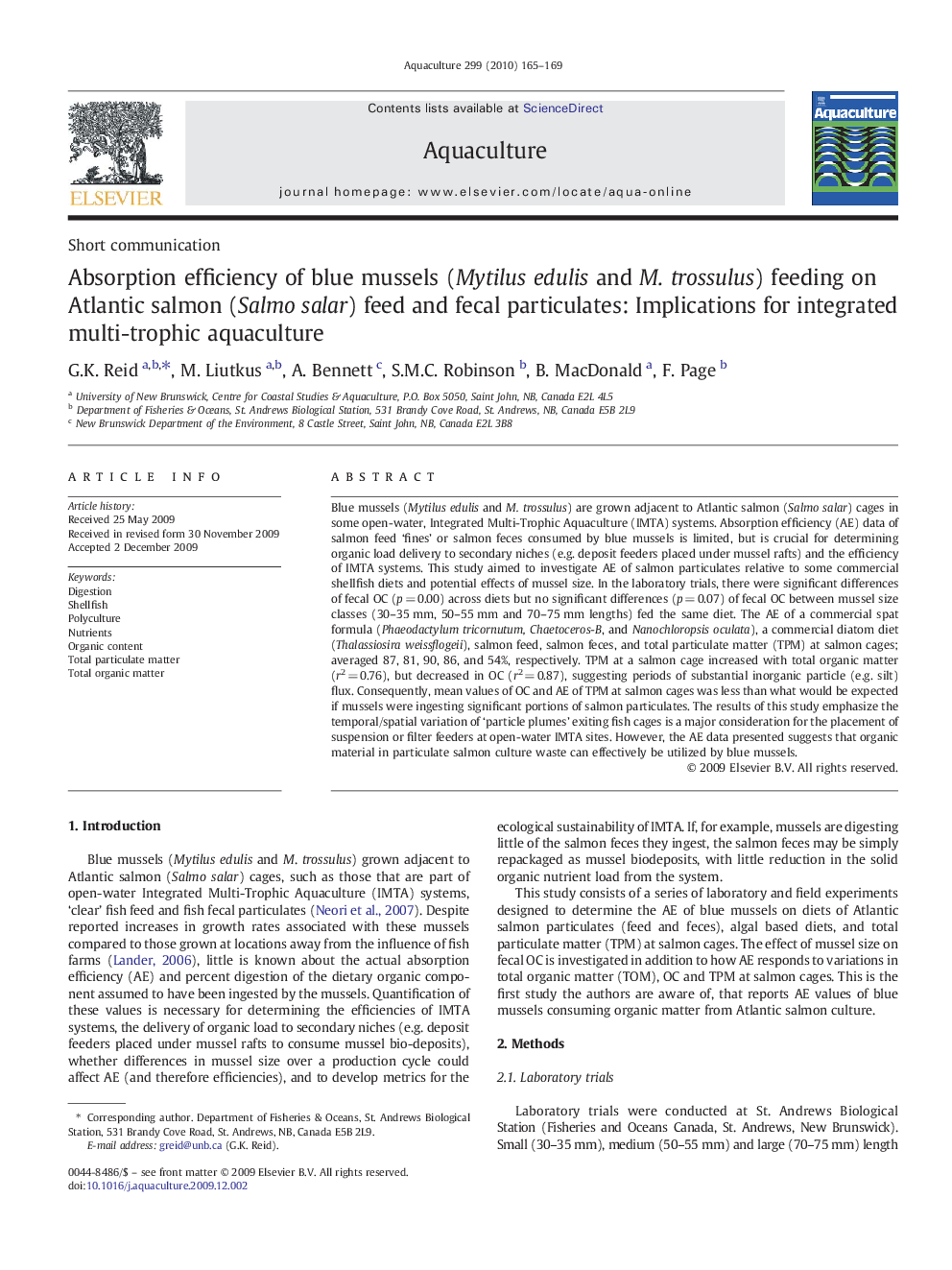| کد مقاله | کد نشریه | سال انتشار | مقاله انگلیسی | نسخه تمام متن |
|---|---|---|---|---|
| 2423786 | 1552930 | 2010 | 5 صفحه PDF | دانلود رایگان |

Blue mussels (Mytilus edulis and M. trossulus) are grown adjacent to Atlantic salmon (Salmo salar) cages in some open-water, Integrated Multi-Trophic Aquaculture (IMTA) systems. Absorption efficiency (AE) data of salmon feed ‘fines’ or salmon feces consumed by blue mussels is limited, but is crucial for determining organic load delivery to secondary niches (e.g. deposit feeders placed under mussel rafts) and the efficiency of IMTA systems. This study aimed to investigate AE of salmon particulates relative to some commercial shellfish diets and potential effects of mussel size. In the laboratory trials, there were significant differences of fecal OC (p = 0.00) across diets but no significant differences (p = 0.07) of fecal OC between mussel size classes (30–35 mm, 50–55 mm and 70–75 mm lengths) fed the same diet. The AE of a commercial spat formula (Phaeodactylum tricornutum, Chaetoceros-B, and Nanochloropsis oculata), a commercial diatom diet (Thalassiosira weissflogeii), salmon feed, salmon feces, and total particulate matter (TPM) at salmon cages; averaged 87, 81, 90, 86, and 54%, respectively. TPM at a salmon cage increased with total organic matter (r2 = 0.76), but decreased in OC (r2 = 0.87), suggesting periods of substantial inorganic particle (e.g. silt) flux. Consequently, mean values of OC and AE of TPM at salmon cages was less than what would be expected if mussels were ingesting significant portions of salmon particulates. The results of this study emphasize the temporal/spatial variation of ‘particle plumes’ exiting fish cages is a major consideration for the placement of suspension or filter feeders at open-water IMTA sites. However, the AE data presented suggests that organic material in particulate salmon culture waste can effectively be utilized by blue mussels.
Journal: Aquaculture - Volume 299, Issues 1–4, February 2010, Pages 165–169